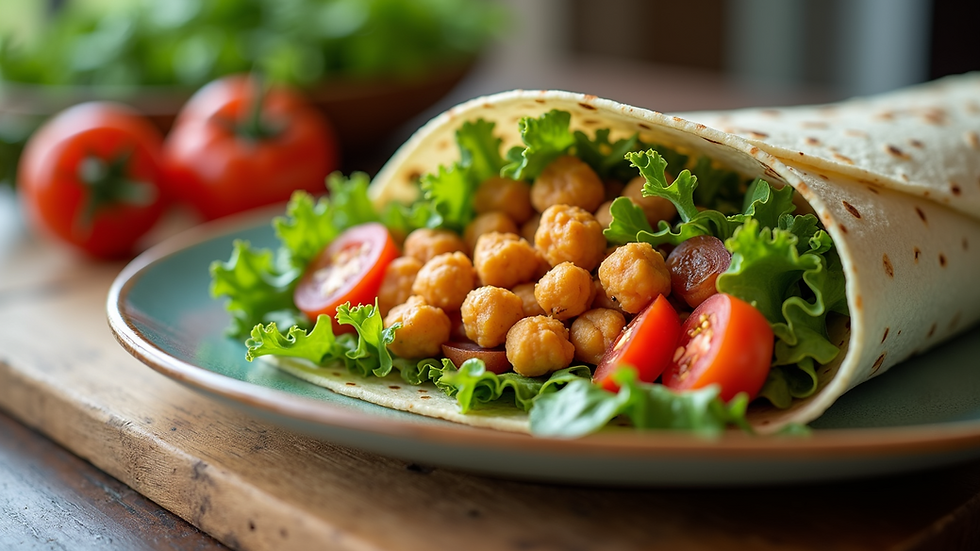Simple Steps to Start Cooking Plant-Based Meals
- Lellieth Keize

- Sep 15
- 3 min read
Switching to plant-based meals can feel overwhelming at first. But with a few simple steps, you can easily start cooking delicious and nutritious dishes that are good for you and the planet. This guide will walk you through practical tips to help you embrace plant-based cooking without stress.
Understanding the Basics of Cooking Plant-Based
Cooking plant-based means focusing on foods that come from plants. This includes vegetables, fruits, grains, nuts, seeds, and legumes. It does not necessarily mean you have to be vegan or vegetarian, but rather that your meals are primarily made from plant sources.
To get started, familiarize yourself with common plant-based ingredients. For example:
Legumes like lentils, chickpeas, and black beans are excellent protein sources.
Whole grains such as quinoa, brown rice, and barley provide fiber and energy.
Vegetables should be the star of your plate, offering vitamins and minerals.
Nuts and seeds add healthy fats and texture.
By focusing on these ingredients, you can create balanced meals that satisfy your hunger and nourish your body.

Easy Tips for Cooking Plant-Based Meals at Home
Starting with plant-based cooking is easier than you might think. Here are some practical tips to help you get going:
Plan Your Meals - Decide what you want to cook for the week. Planning helps you shop efficiently and reduces food waste.
Stock Your Pantry - Keep staples like canned beans, dried lentils, whole grains, and spices on hand.
Experiment with Flavors - Use herbs, spices, and sauces to make your meals exciting. For example, cumin and smoked paprika add warmth to bean dishes.
Cook in Batches - Prepare large portions and store leftovers for quick meals later.
Use Simple Cooking Methods - Steaming, roasting, and sautéing are easy ways to prepare vegetables and grains.
By following these steps, you’ll build confidence and enjoy the process of cooking plant-based meals.

How to Find Inspiration and Recipes
Finding inspiration is key to maintaining your plant-based cooking journey. There are many resources available online, including blogs, social media, and cooking apps. One great way to start is by exploring plant-based recipes that suit your taste and skill level.
Try to:
Follow food bloggers who specialize in plant-based meals.
Join online communities where people share tips and recipes.
Watch cooking videos to learn new techniques.
Experiment with seasonal produce to keep meals fresh and exciting.
Having a variety of recipes at your fingertips makes it easier to stay motivated and enjoy your meals.

Essential Kitchen Tools for Plant-Based Cooking
You don’t need fancy equipment to cook plant-based meals, but some tools can make the process smoother:
A good chef’s knife for chopping vegetables quickly and safely.
Cutting boards to keep your workspace organized.
A large pot or Dutch oven for soups, stews, and grains.
A blender or food processor for making sauces, dips, and smoothies.
Non-stick pans for sautéing without excessive oil.
Investing in these basics will help you prepare meals efficiently and enjoy the cooking experience.
Tips for Making Plant-Based Meals More Satisfying
Sometimes, people worry that plant-based meals won’t be filling or flavorful. Here are ways to make your dishes satisfying:
Include protein-rich ingredients like beans, tofu, tempeh, or seitan.
Add healthy fats from avocados, nuts, and seeds to enhance texture and taste.
Use umami-rich ingredients such as mushrooms, soy sauce, or nutritional yeast to boost flavor.
Balance your plate with a mix of carbohydrates, proteins, and fats.
Don’t forget spices and herbs to add depth and aroma.
With these tips, your plant-based meals will be both nourishing and delicious.
Embracing a Plant-Based Lifestyle One Meal at a Time
Starting to cook plant-based meals is a journey, not a race. Begin by incorporating one or two plant-based dinners a week and gradually increase as you feel comfortable. Remember, every small change counts toward better health and a more sustainable lifestyle.
Explore new ingredients, try different recipes, and enjoy the process of discovering how tasty and satisfying plant-based cooking can be. With time, it will become a natural and enjoyable part of your routine.
Happy cooking!






Comments